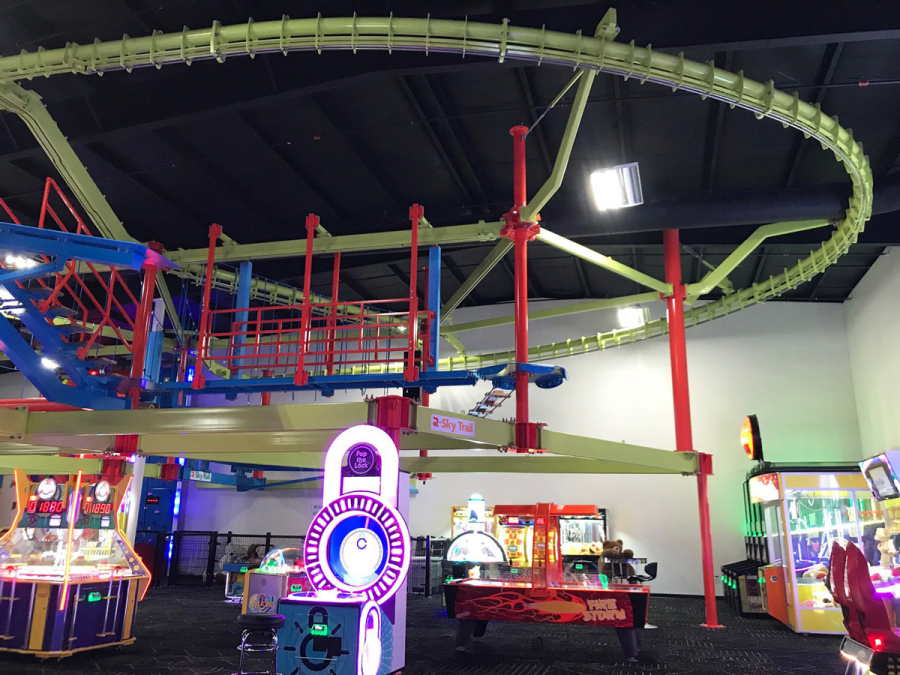Time for a Refresh? How to Hire a Creative Vendor

Whether an attraction is ready to shed a tired vibe, considering updating branding and the space to reflect a different aesthetic, or looking to optimize for better results, when it’s time for a makeover, consultants or creative design professionals can help guide the process.
But where should attractions owners begin? What elements need to be considered in the search to ensure a connection with the right vendor?
Start with ‘Why?’
According to Scott Swenson, owner of Scott Swenson Creative Development, it’s important for attractions to first focus on the reasons driving the refresh and the goals they hope to accomplish. “It’s not really the what, it’s more the why,” the Florida-based consultant says.

Sure, everybody wants to create a space that’s visually appealing. But what are other important objectives? These might include making the layout more efficient—perhaps with the larger goal of increasing guest capacity—or improving length of stay, per capita spending, the attraction’s visibility, the guest satisfaction level, or some other metric. With a clear sense of your intent, adds Swenson, attractions operators should be sure to articulate the why to the vendor.
For clients having difficulty determining their goals, Swenson says he can conduct “brainstorming facilitation,” a brief exercise to help them define and prioritize their objectives. “It all ties back to their mission, vision, and values,” he says. “I’m a firm believer that good creative design should follow function, not supersede it.”
Finding a Fit
When embarking on a redesign, an attraction often develops a request for proposal (RFP) to specify its objectives, describe its business and the company’s mission, and explain the scope of work to be done. Generally, the document is not overly prescriptive; it just gives a general sense of the project and helps orient prospective vendors to begin the creative process.
A vendor typically does not start running the meter immediately. As attractions consider working with consultants and designers, there is often a no-cost introductory session to get to know one another.
“We expect—and encourage—there to be an initial interview process,” says Colin Cronin, senior project director at design firm Jack Rouse Associates (JRA). He adds that it goes both ways and is just as important for the vendor to establish a level of comfort with the client prior to formalizing a relationship.
As a preliminary step, Cronin says JRA will often develop concept decks or “visioning documents.” They might include renderings or could take the form of a one-page narrative. “This is where we are dreaming,” he explains. While the firm does charge for this service, it is flexible and can scale the work to meet the client’s needs. The documents could then be used to gain board approval or to get financing for a redesign.
Once it gets the green light from a client, JRA does not unilaterally craft a comprehensive design plan. Instead, it regularly meets with the attraction’s principals to engage them in a deliberate and iterative creative process. “JRA is all about collaboration,” Cronin says. “When we work on a project, we are a partner with the client.”

Dan Aylward, director of operations for Crayola Experience, says that was his company’s experience with JRA. When the attraction wanted to refresh and expand its original site in Pennsylvania in 2011, it contracted with the design company. “We relied on their creativity and ingenuity to develop the attraction,” he says. “But it was very much a team effort.”
Over the course of 18 months, JRA helped the client create a more dynamic and engaging space that Crayola continues to use as a template when developing additional sites. “We reevaluated the narrative and messaging of Crayola Experience,” Cronin says. “We helped transform it into a celebration of the relationship that guests have with Crayola and with creativity in general.”
Moving Step by Step

When the owners of Space Entertainment Center in New Hampshire wanted to rebrand and refresh its location, it took a cautious approach. “Rather than doing everything at once, it has been an ongoing, incremental process,” says Ron Weinberg, director of strategy and marketing. “Our strategy has been to make smaller improvements, gauge the response, and make sure each change makes sense.”
The family entertainment center (FEC) first redesigned the façade of its laser tag. Next, it gave the arcade a new look and feel while also adding a ropes course and zip line. About a year later, amid the pandemic, it changed the attraction’s name to Block Party Social. Post-pandemic, it plans to overhaul its food and beverage.
The FEC decided to contract with Stibler Associates, a local interior design company that specializes in hospitality. Weinberg says it was important to work with a firm that knows the market, is readily available for in-person meetings, has relationships with area contractors, and understands state and local laws. “From a cost standpoint, they know how to get the most bang for the buck,” he adds.
If an attraction is contemplating a renovation of its facility’s space, Swenson says he believes it may be a great time to start the process. With the upheaval caused by the pandemic, lots of attraction professionals, many of whom are seasoned veterans, have recently gone into business for themselves, starting their own firms. “Look for newer consultants, people who are hungry,” Swenson says.
